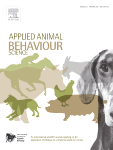Document type : news item from The Pig Site
Author: Friedrich-Loeffler-Institut
Preview: Sharing knowledge and experiences is a key component of success in implementing the forthcoming changes in sow housing
This was highlighted at the international workshop "Freedom in Farrowing and Lactation 2021" (FFL21) where 50 scientists and industry personnel representing over 20 countries across Europe, Asia, Australasia and North America all agreed that in the future lactating sows housed indoors will be loose.
The three main take home messages from Freedom in Farrowing and Lactation 2021 were:
- Freedom in farrowing and lactation is becoming 'how' and not 'when'
- How' gives insight to the complexity
- Sharing knowledge and experience is win-win
Key issues raised at the workshop included:
- SEGES director Christian Fink Hansen highlighted how "We've come from 'if lactating sows are to be loose housed' to 'maybe and when' and now it is more about 'how'. It is given that Danish sows will be loose - and indoor - in the suckling period - and that the solutions must be based on research to ensure robust systems.
Across countries and scientists there is a growing understanding of how complex a transition towards loose lactating sows is. This has to be considered by policy makers in the future legislative process of the "End the Cage Age" initiative to ensure science-based decisions.
- Professor at Vetmeduni, Vienna, Johannes Baumgartner outlined the complex overall challenge of changing systems to meet all the needs for sustainability (environmental, societal and financial). Challenges at specific feature level include both housing design and management: how to enable nestbuilding, do we use short term confinement or not, what space should be available for sows, how do we optimise work conditions and how do we manage large litter sizes.
"A highly coordinated collaboration amongst scientists is needed to solve these issues. This has to involve environmental, technical, social and animal science, as well as an essential close collaboration between scientists, pig producers and farm equipment companies" as summed up by Prof. Sandra Edwards at the end of the workshop.
- As highlighted by chairman of the Swedish Pig Association, Mattias Espert: "Successful progress will need knowledge-sharing at all levels. I and my Swedish colleagues, who already have loose farrowing, can share our lessons learned during transition."
He mentioned that the Swedish market opportunities were mis-judged in the past, and the pig production in Sweden decreased from 14,000 producers in 1990 to 1,000 producers in 2021.
Workshop participants concluded, that knowledge exchange must include both scientific results and practical experiences on having loose sows, motivation for staff to change to higher welfare systems, piglet mortality in different pen systems, how to provide nestbuilding-materials, emissions from pens and much more. Awareness of the pros and cons of existing systems will help others decide on a new system.






